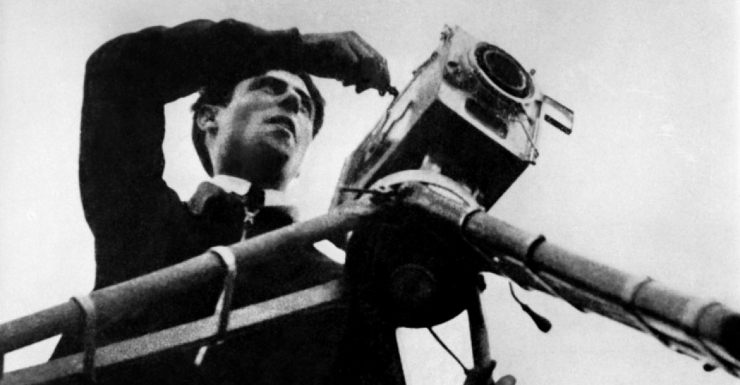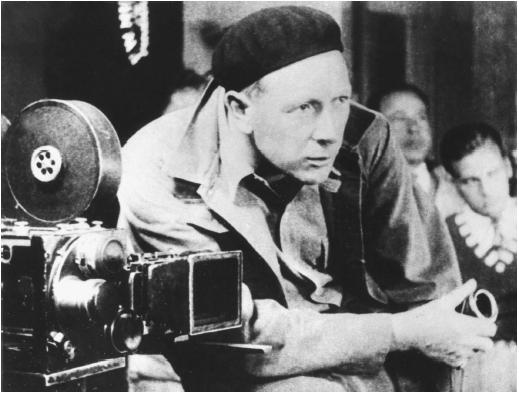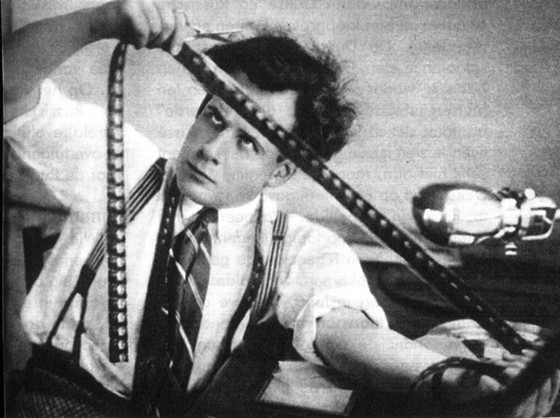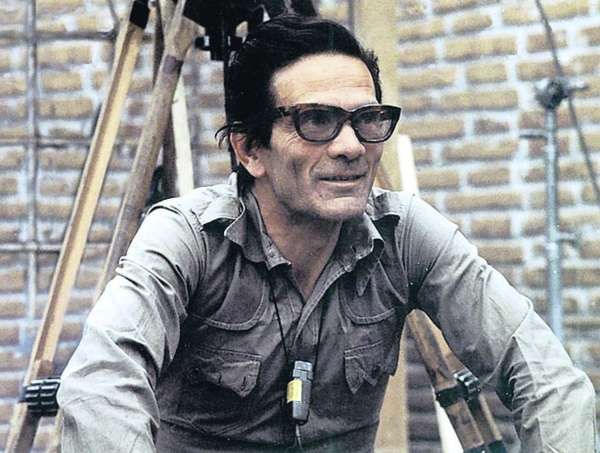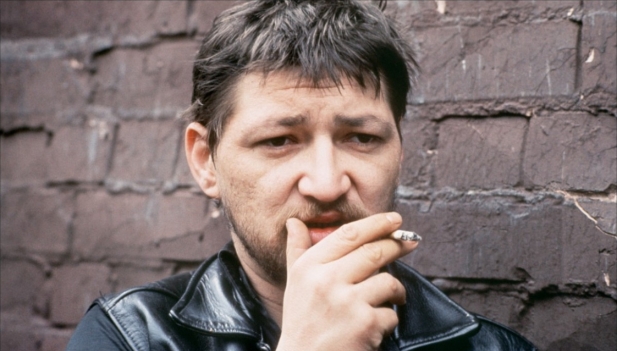5. Jean Vigo (April 26, 1905 – October 5, 1934)
Underappreciated while living, Jean Vigo is a key figure of early French cinema. His career as a director was one of the shortest in history, where he only made four films with a combine running time of no more than 200 minutes. After directing two short films (“À propos de Nice” and “La Natation par Jean Taris”), Vigo made the controversial “Zéro de conduite” (banned until the end of WWII) and a year later he made what many people consider one of the finest films in all of cinema “L’Atalante” (his only feature length film and shot while severely ill), about a newlywed couple and the start of their shaky marriage.
Major Directors like Jean-Luc Godard and Francois Truffaut have cited Jean Vigo as great influence on their work and the work of other fellow French new wave directors. Jean Vigo died in Paris, France from complications of Tuberculosis which he had been suffering for more than eight years.
4. F.W. Murnau (December 28, 1888 – March 11, 1931)
An important subject of the silent film era and a pioneer of movie making in general, F.W. Murnau, is a gem of international filmmaking, and as fellow director Alexandre Astruc once called him “the greatest poet the screen has ever known”. Born to a wealthy family, Murnau enjoyed reading from a very early age. After completing studies in University of Berlin and later attending the University of Heidelberg, he joined a theater group and started performing in local shows.
When World War I broke, Murnau had to serve as part of Germany’s infantry, surviving several plane crashes and even being held in captivity by the Switzerland army until the war’s end. After returning from war, Murnau created a film studio and continued his artistic career, when in 1919 he directed his first feature called “The Boy in Blue”. “Nosferatu” came next and it became his best known work, the film was illegally based on “Bram Stroker’s Dracula” (Murnau was sued for copyright infringement).
“The Last Laugh” (1924) was a success in terms of creativity and movie making with its fluid use of camera movements, Murnau made a lasting impression in German Cinema. After leaving Germany for Hollywood, he made five more films which made Murnau a household name in America, “Sunrise: A Song of Two Humans” and “Sunrise” (winning Best Picture at the 1929 Oscar’s ceremony).
Before his last movie “Tabu” was released, F.W. Murnau was in a Rolls Royce driven by his 14 year old servant through Los Angeles when it crashed against an electric pole, resulting in Murnau suffering an injury to the head and dying the next day at a nearby hospital.
3. Sergei Eisenstein (23 January, 1898 – 11 February, 1948)
Russian born Sergei Eisenstein was called the “The Father of Montage” by many; he was a true “architect” of the medium in the early years of cinema. His family moved frequently and after enlisting in the Red Army, Eisenstein decided that a life in the military was not for him, and in 1920 he started working in the Proletkult Theater (the Theater of the People) in Moscow, first as a stage assistant then quickly moving up the ranks to co-directing.
By 1925, Eisenstein had made his first feature called “Strike”, that same year he directed his revolutionary communist propaganda film, “The Battleship Potemkin”, whose famous “Odessa steps” sequence has been re-created numerous times (Coppola and Spielberg to name a few). After the international success of “Battleship Potemkin”, Eisenstein made seven more films before his death of a heart attack a few days after his fiftieth birthday. His theories on montage are still analyzed in film courses around the world, influencing new generations of filmmakers.
2. Pier Paolo Pasolini (5 March, 1922 – 2 November, 1975)
The controversial Pier Paolo Pasolini was everything an artist could be. He was a writer, poet, philosopher, director, actor, painter, etc.; in the way, making Pasolini an important figure in Italian cinema and all of its arts. Born in 1922, his father was in lieutenant in the military and his mother was a schoolteacher (it is said that Pasolini’s father once saved Italian dictator Mussolini of an assassination attempt).
Pasolini’s career started as a poet, publishing his first poetry collection at the tender age of 19. By the late 40’s, he was teaching and became part of the “Italian Communist Party” (PCI), several years later he lost his job as a teacher and was kicked out of the PCI after being charged for lewd acts.
His first venture into filmmaking was in 1954 writing part of the screenplay for the Italian film “The River Girl”. Pasolini’s directorial debut came in 1961 with the film “Accattone”, followed by the excellent “Mamma Roma”. His next film was “The Gospel according to St. Mathew” whose depiction of Christ as a leftist-Marxist was received with much controversy. The coming years were very productive for Pasolini and in 1975 he directed his last film and one of the most controversial of all time: “Salo: or the 120 of Sodom” (based on Marquis de Sade’s book of the same name), in which four Italian fascists kidnap a group of teenagers and submit them to sexual and mental torture.
In 1975 Pasolini was run over multiple times with his own car, resulting in his death. A seventeen year old male prostitute confessed to the murder, but several years later retracted from the story telling the authorities that he was “forced” to kill Pasolini. Many have said that he was killed for being communist.
1. R.W. Fassbinder (31 May, 1945 – 10 June, 1982)
Known to be a very fast paced director, Rainer Werner Fassbinder left a large body of work before his untimely death in 1982 at the age of thirty-seven. German born, Fassbinder’s career only lasted fifteen years, in the process completing more than forty films, two television series, three shorts and more than twenty stage plays.
In his teens, Fassbinder took acting lessons, and made his first 8mm films. In 1968 he directed his first play for the “Munich action-theater”, after just being in the theater company for less than a year, subsequently setting his sights on movie making. His early years in the business weren’t so successful and after directing his first ten films, came his first international success the melodrama “Ali: Fear eats the soul” (1974) starring Fassbinder’s boyfriend at the time El Hedi ben Salem and Brigitte Mira.
As his international fame grew, in Germany he became more famous for his personal life, that didn’t stop Fassbinder from directing his most successful film “The Marriage of Maria Braun (1978). Two years later he returns to directing with his thirteen hour television series “Berlin Alexanderplatz “(1980).
By the 80’s Fassbinder was heavily into drug use, and 1982 he was found dead in his apartment. It is said that he was lying in his bed with a cigarette still on his lips and blood coming out of one of his nostrils. The police report declared that Fassbinder died of cocaine and barbiturates overdose.
Author Bio: Ivan works and lives in Puerto Rico. He studied Cinematography and Directing in CCAT (Television Art and Sciences College). He has exhibitions in mayor group shows, presenting his work with internationally recognized artists from PR, France, Taiwan, Germany, Indonesia, Brazil, USA, Greece and Belgium. At the moment Iván is the official documentarian of Wallpeople, San Juan. He also collaborates with different street skaters and street artist collectives as his video and documentation producer.
